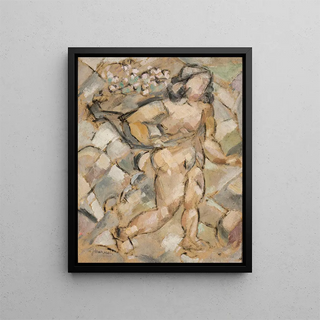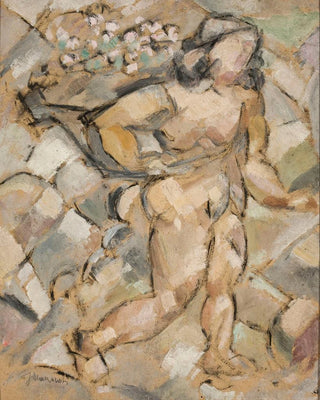Art print | Woman Running - Tadeusz Makowski


View from behind

Frame (optional)
In the fascinating world of art, some works transcend their era to become timeless witnesses to humanity. "Femme qui court" by Tadeusz Makowski is one of those creations that capture the very essence of life and human dynamism. Through this piece, the Polish artist manages to evoke a deep emotion, blending the lightness of movement with the gravity of feelings. The scene depicts a woman in full run, symbolizing vitality and freedom, inviting the viewer to immerse themselves in a world where every gesture is loaded with meaning. This art print, which engages in a dialogue between tradition and modernity, offers a rich and immersive visual experience.
Style and uniqueness of the work
Tadeusz Makowski's style is distinguished by its elegance and ability to fuse figurative and abstract elements. In "Femme qui court," the silhouette of the protagonist is rendered with striking simplicity, while vibrant colors and stylized shapes create a dynamic atmosphere. The brushstrokes, both fluid and precise, seem to capture a fleeting moment, as if the artist aimed to immortalize movement in all its splendor. This piece is also marked by a bold use of light and shadow, which enhances volume and depth, giving the scene an almost sculptural dimension. The interaction between figurative and abstract elements in this composition demonstrates rare technical mastery, while revealing an artistic sensitivity that touches the heart.
The artist and his influence
Tadeusz Makowski, born in Poland, established himself as an essential figure in 20th-century art. His career, marked by diverse influences ranging from cubism to expressionism, was nourished by his travels and encounters with other renowned artists. Makowski always sought to express universal emotions through his art, and "Femme qui court" is a perfect illustration of this. His innovative approach and ability to play with shapes and colors allowed him to create a unique visual language, which continues to inspire many contemporary artists. By integrating elements of culture

Matte finish

View from behind

Frame (optional)
In the fascinating world of art, some works transcend their era to become timeless witnesses to humanity. "Femme qui court" by Tadeusz Makowski is one of those creations that capture the very essence of life and human dynamism. Through this piece, the Polish artist manages to evoke a deep emotion, blending the lightness of movement with the gravity of feelings. The scene depicts a woman in full run, symbolizing vitality and freedom, inviting the viewer to immerse themselves in a world where every gesture is loaded with meaning. This art print, which engages in a dialogue between tradition and modernity, offers a rich and immersive visual experience.
Style and uniqueness of the work
Tadeusz Makowski's style is distinguished by its elegance and ability to fuse figurative and abstract elements. In "Femme qui court," the silhouette of the protagonist is rendered with striking simplicity, while vibrant colors and stylized shapes create a dynamic atmosphere. The brushstrokes, both fluid and precise, seem to capture a fleeting moment, as if the artist aimed to immortalize movement in all its splendor. This piece is also marked by a bold use of light and shadow, which enhances volume and depth, giving the scene an almost sculptural dimension. The interaction between figurative and abstract elements in this composition demonstrates rare technical mastery, while revealing an artistic sensitivity that touches the heart.
The artist and his influence
Tadeusz Makowski, born in Poland, established himself as an essential figure in 20th-century art. His career, marked by diverse influences ranging from cubism to expressionism, was nourished by his travels and encounters with other renowned artists. Makowski always sought to express universal emotions through his art, and "Femme qui court" is a perfect illustration of this. His innovative approach and ability to play with shapes and colors allowed him to create a unique visual language, which continues to inspire many contemporary artists. By integrating elements of culture






